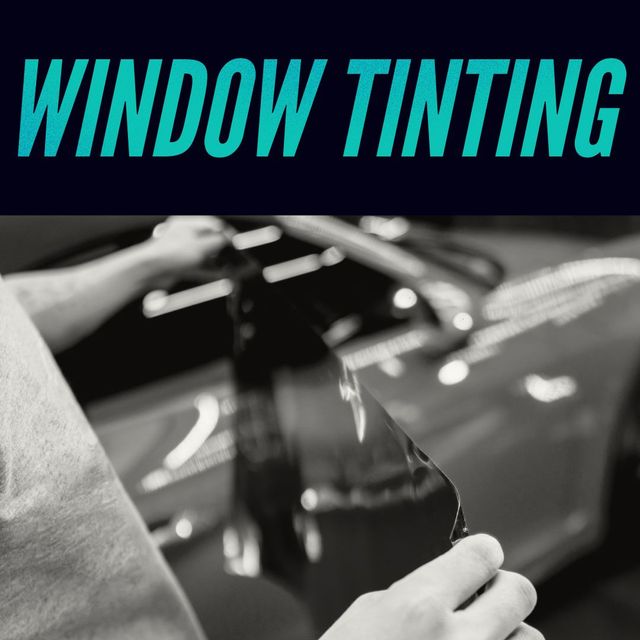Exactly How Auto Window Tinting Shields Your Car's Inside
Window Tinting Laws and Standards: What You Need to Know Prior To Tinting Your Auto
Before waging window tinting for your car, it is vital to acquaint yourself with the diverse laws and standards that govern this method throughout various states. These policies determine the permissible degrees of tint darkness, typically gauged by visible light transmission (VLT) percents, and consist of specific terms for front windshields targeted at making certain road security. Additionally, particular jurisdictions may provide medical exemptions for people with qualifying problems. Understanding these intricacies can save you from possible lawful ramifications, however what are the certain regulations in your state?
Review of Window Tinting Regulations
Home window tinting legislations are frequently subject to variation throughout different jurisdictions, mirroring local policies and security considerations. These laws dictate the acceptable degrees of tint darkness and reflectiveness on lorry windows, ensuring that chauffeurs maintain ample visibility while additionally protecting versus damaging UV rays and warmth.
The majority of laws identify home window tinting based upon the Visible Light Transmission (VLT) percent, which indicates the quantity of light that can travel through the window. Generally, lower VLT percents signify darker tints. Laws often separate between the front, side, and rear windows, with stricter restrictions related to the front windscreen to enhance safety and security for both the chauffeur and various other roadway customers.
Additionally, some territories enforce constraints on the reflectivity of the tint, stopping too much glare that might harm exposure. Exemptions to these legislations may exist for individuals with specific medical conditions requiring additional sun security. Conformity with home window tinting policies is essential, as violations can cause penalties, obligatory removal of the tint, and prospective rises in insurance coverage premiums. It is necessary for car owners to acquaint themselves with regional legislations prior to continuing with home window tinting installments.
State-by-State Color Regulations
Recognizing the details window tinting regulations in each state is vital for vehicle owners looking for to follow the law. Each state in the united state has actually developed its own collection of policies governing home window tinting, which can vary considerably. These guidelines commonly dictate the allowable levels of color darkness, the sorts of home windows that can be tinted, and any clinical exemptions that may apply.
As an example, states like California have rigid restrictions on color darkness for front home windows, while others, such as New Mexico, may allow darker tints. Additionally, specific states mandate certain visibility percents for different home windows, including the windscreen, front side home windows, and back windows. It is crucial for automobile proprietors to familiarize themselves with their state's laws to avoid prospective fines or fines.
Furthermore, some states may need an accreditation sticker to be put on tinted windows, showing conformity with state laws. Failure to comply with these laws not only takes the chance of legal effects however can also affect safety and visibility while driving. For that reason, vehicle owners need to perform comprehensive research study or speak with neighborhood authorities to ensure full understanding and compliance with state-by-state tint laws.
Allowed Color Degrees and Kinds
Lots of vehicle proprietors might be stunned to learn that enabled color degrees and types differ extensively across various states. Each state has developed its own policies pertaining to the permitted darkness and reflectivity of home window tint, commonly gauged by Visible Light Transmission (VLT) percents. VLT describes the amount of light that can travel through the tinted home windows; thus, a reduced percentage shows a darker color.

Furthermore, the kinds of color materials allowed can differ, with some states banning metallic or mirror-like finishes. It is necessary for car proprietors to familiarize themselves with their state's details legislations to make certain conformity. Non-compliance can result in penalties, necessary elimination of the tint, or other legal consequences, making it essential to understand these regulations before waging installation.
Medical Exemptions for Tinting
While not all states provide allowances for medical exceptions pertaining to home window tinting, those that do recognize the requirement for particular individuals to boost presence and convenience due to medical problems. Various medical problems, such as lupus, skin cancer, and certain eye problems, can make people particularly conscious sunlight. These people may call for darker colors to safeguard themselves from harmful UV rays and glow.

It is very important to note that also with a medical exemption, there may still be limitations on the level of color permitted. Conformity with state legislations makes sure that people are both protected and within lawful restrictions. Those taking into consideration clinical exceptions ought to call their local more information Division of Motor Cars or equal authority to understand the procedures and demands essential to use for an exemption effectively.
Penalties for Non-Compliance
Stopping working to abide by window tinting regulations can result in significant charges, which vary by state. Law enforcement companies are encouraged to provide citations for lorries that do click for source not abide by the specified tinting policies. These penalties commonly include fines, which can range from modest total up to several hundred dollars, depending on the severity of the infraction and the state in question.
In some jurisdictions, repeated offenses might lead to escalating penalties or added penalties, such as necessary court appearances. Non-compliance may demand the elimination of prohibited tinting, often at the proprietor's expenditure. In extreme situations, habitual culprits may encounter suspension of their car registration till compliance is attained.
In addition, insurance coverage ramifications might emerge from receiving multiple citations for window tint infractions. Insurance providers may check out such offenses as an indicator of riskier habits, potentially leading to boosted premiums or difficulty in protection.
To stay clear of these fines, it is crucial for automobile owners to acquaint themselves with their regional window tinting legislations and ensure that their vehicle complies (Window Tinting). This proactive technique not just stays clear of legal ramifications yet likewise promotes roadway safety and security
Conclusion

Many regulations categorize home window tinting based on the Visible Light Transmission (VLT) percentage, which shows the quantity of light that can pass through the window. Compliance with home window tinting guidelines is critical, as violations my response can result in penalties, obligatory removal of the color, and possible rises in insurance premiums.Recognizing the particular home window tinting policies in each state is important for lorry owners seeking to conform with the law. These laws commonly determine the allowable degrees of color darkness, the kinds of home windows that can be tinted, and any medical exemptions that might use.
For instance, states like The golden state have stringent limitations on tint darkness for front windows, while others, such as New Mexico, may permit darker tints.